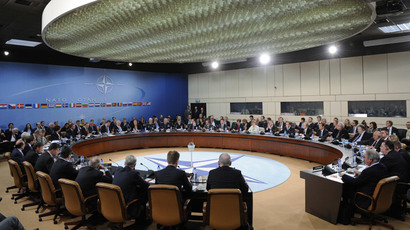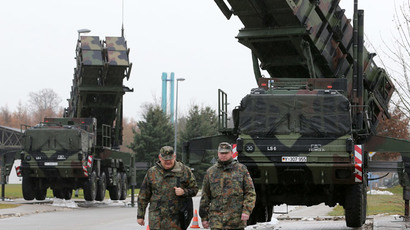Bombs for peace: NATO marks 65 year anniversary

NATO was long touted as a post-WWII body of collective security, though few on the wrong end of its bombing campaigns have felt any safer for it. Here are a few reasons why 65 years of NATO haven’t made the world a better place.
NATO was founded as a post WWII force “to keep the Americans in, the Russians out and the Germans down.”

But for over 40 years, the alliance barely made a peep, getting involved in its first hot war after its Cold War rival had already exited history’s stage.

In Bosnia, NATO got Security Council approval every step of the way from 1992-1996, as it set up no-fly zones to protect “safe areas” and UN peacekeepers on the ground, as warring factions tore the former Yugoslavia apart.

On 28 February 1994, NATO engaged in the first combat operations in its history when its fighters shot down four Bosnian Serb fighter-bombers conducting a bombing mission in violation of the No-Fly Zone.

They also set up a naval blockade in the Adriatic Sea to stem the tide of arms and military equipment flowing into the former Yugoslavia, though it was a series of airstrikes known as Dead Eye and Deliberate Force that brought the Serbs to the negotiating table.

Since then, it’s gotten, how shall we put this, bigger, like a
heck of a lot bigger.

As NATO began aggressively expanding, in 1999 the alliance threw UN mandates out of the window when they started a 78-day bombing campaign of the Federal Republic of Yugoslavia, after negotiations reportedly “broke down.”

It’s reported that up to 2,000 Yugoslav civilians were killed in the NATO airstrikes.

The Chinese Embassy in Belgrade also didn’t fair too well.

“There is always a cost to defeat an evil. It never comes free, unfortunately. But the cost of failure to defeat a great evil is far higher," said NATO spokesman Jamie Shea said at the time.

Two years on, NATO evoked Article 5 of its treaty requiring the alliance to come to the aid of any member state subject to an armed attack for the first time in over half a century following the 9/11 attacks.

The NATO led-International Security Assistance Force (ISAF) was first tasked with securing Kabul, though their mandate was later expanded throughout the country.

And as always, when the bombs began to fall, the cost of defeating evil was one NATO was willing to pay, hence the two dozen dead Pakistani soldiers during an errant airstrike on the Pakistani-Afghanistan border in November 2011.

Or 18 dead civilians – half of them children – during a coalition airstrike in an eastern province in Afghanistan in June of the following year.

But apologies are hard to come by, as victories are widely celebrated, as civilian causalities are chalked up to "regrettable circumstances."

And for the scores of “unacknowledged” civilians killed during NATO’s 2011 bombing campaign in Libya, or the rebel fighters taken down in friendly fire attacks, NATO repeats the eternal mantra heard every time when it attempts to bomb its way to peace: “collateral damage.”

You can share this story on social media:














